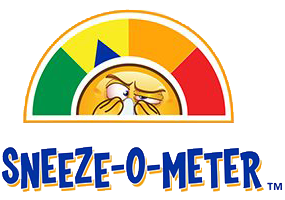When we think of spring, we think of flowers blooming, nice weather, outdoors, sports. Many Charlotte residents agree it’s our most beautiful time of year! However, for nearly one-third of you, spring is not enjoyable due to spring allergies.
If you are one of over 40 million Americans who suffer from seasonal allergies or asthma, spring can be far less enjoyable. Hay fever symptoms of ongoing runny nose, congestion, sneezing, itchiness, can make one miserable, while asthma can significantly limit everyday activities. About 23 million people, including almost 7 million children, have asthma. A staggering 70 to 80 percent of asthmatics also have an allergic trigger.
And since Charlotte is known as one of the harshest U.S. cities for spring allergies, no time is too soon to prepare for allergy season. We’ve provided information about the most common allergy triggers and treatments in the area, along with six tips that will help you be proactive about your allergies this spring.
Click here to get the free PDF guide, plus it also includes a Spring Allergy Checklist: Overcoming Spring Allergies – What You Need to Know
Allergy Triggers and Treatments
The main culprits during the spring are tree pollens, grass pollens and molds. Dust mites and animal dander also play a role as year-round allergens. In a survey of U.S. homes, approximately one-quarter had levels of dust mite allergens present at a level high enough to trigger asthma symptoms. Allergy testing by an allergist is the first step in identifying these triggers. This is usually best performed by skin or blood testing.
One step to feeling better is avoidance of offending allergens whenever possible. Some pollen allergies and mold avoidance measures include closing windows on humid and windy days or showering after being outdoors. Bathing pets might help reduce exposure on high pollen days and can wash away pet dander. There are also measures that can be taken to lower dust mite exposure.
Treatment options can include antihistamines, nasal sprays, eye drops and decongestants. Some asthmatics achieve symptom control on daily inhalers or other controller medications, which typically help reduce inflammation. An evaluation with testing will help determine the best medication regimen.
Allergen immunotherapy (individualized allergy shots) is the best method for achieving long-term change of allergy and asthma symptoms. It is the only allergy therapy that has been proven to prevent the progression of allergic disease, reduce the risk of developing allergic asthma, and provide long-term remission after therapy ends. Studies show that with correct dosing and duration of immunotherapy, one can benefit as long as 10 years after completion. Immunotherapy also has a long track record of safety in children, the elderly, and pregnant women. Over time, there is typically less need for medications and healthcare utilization.
6 Tips for Handling Spring Allergies
Allergy sufferers experience a range of symptoms from sneezing, itchy and watery eyes, stuffy nose, nasal drainage, fatigue, headache, itchy throat, and even cough and wheezing in severe cases. Here are a few ways to combat those spring allergies so that this season is better.
1. Know What You’re Allergic To
 If you’re a spring allergy sufferer, then you’re more than likely allergic to pollen; however, do you know which type of pollen?
If you’re a spring allergy sufferer, then you’re more than likely allergic to pollen; however, do you know which type of pollen?
You might be asking yourself, “Wait, what? There’s more than one type of pollen?” Indeed. You could be allergic to any of the following:
- Tree pollen: Trees pollinate throughout the spring. Cedar and birch trees lead the pack starting in February. Oak and pine are the highest pollens in the mid-spring in Charlotte. Other trees such as maple, cottonwood, and birch can also be problematic in March and April.
- Grass pollen: Depending on rainfall totals grass pollen is detectable in the late spring and continues through the summer. It finally disappears with the colder fall weather.
- Mold: As the soil warms up the mold spores begin to be released. These are very weather-dependent and increase dramatically in the days following rain. Mold counts can be higher in certain environments such as greenhouses, farms, and antique stores.
2. Start Treatment with Medication Early
Treat your allergy symptoms before they begin. If you know the spring season is a difficult time for your allergies, start taking a daily allergy medicine ahead of time. Taking a daily antihistamine or nasal spray can reduce symptoms of seasonal allergies. There are several types of allergy medications in over-the-counter forms, but it is important to talk with your doctor or allergist to find the right medications for you.
Once you receive your allergy diagnosis from your allergist, your allergist will decide the best medication regimen for you. Some of the medications prescribed include antihistamines, decongestants, steroid nasal sprays, and more. Many allergy medications are available over the counter; your allergist can guide you through the many choices.
3. Monitor Pollen Levels
 Whether your allergies stem from ragweed, grass, oak, or birch pollens, it’s important to get familiar with pollen counts. Watch pollen levels using Charlotte’s local pollen tracker.
Whether your allergies stem from ragweed, grass, oak, or birch pollens, it’s important to get familiar with pollen counts. Watch pollen levels using Charlotte’s local pollen tracker.
The pollen counter is located in our SouthPark office and collects air samples daily from February through November. The collected particles are then identified under a microscope and are posted to our website. On this page, you can track the daily levels of weed, grass, and tree pollens as well as mold spores before heading outdoors. You can see not only this year’s daily pollen count but see the historical averages for the past 10 years. This can help predict what to expect in the coming months.
If you know you are more allergic to certain pollens, you can limit your exposure when those pollen counts are high. Also, exercising in the evening when pollen counts are lower may be more tolerable.
Check out today’s local pollen levels here.
4. Plan Your Outdoor Time Strategically
It’s springtime, so of course you don’t want to be cooped up in the house or at work all the time. However, when you step outside, you often start getting sneezy and itchy in minutes.
It could be that you’re outdoors when pollen counts are highest. There are certain times of day you should venture out and others you should attempt to stay inside. On average pollen counts are highest in the early morning hours, 5 to 10 AM, which explains why most people experience intense morning allergies. The warmer middle of the afternoon is the worst time, as pollen counts will skyrocket.
If it rains, then you get more freedom. Always listen to your body, though. Rain might not wash away every particle of pollen. If you feel allergy symptoms coming on, then get inside.
Limiting exposure to pollen is the first step in reducing allergy symptoms. Keep your house and car windows closed when pollen counts are high. If you need to get outside for sports or yard work, wear a mask to avoid direct pollen inhalation.
5. Keep a Clean House and Shower After Outdoor Activity
When you get home from an outdoor adventure, take your shoes off immediately. Wash your hands and hop in the shower. This allows you to rinse away any pollen that may be on your skin and on your hair. Pollen is a sticky substance. You and your animals bring pollen inside and transfer it to your bed or sofa where continued exposure may cause even more sneezing and congestion. Rinsing off after outdoor activity is an easy and effective way to protect yourself and your family.
Wash your clothes right away if you can. Tell other members of your family to do the same. This should prevent you from tracking allergens inside.
If you have pets, you’ll want to clean any puppy or kitty paws and wipe their fur after they come back in. If you clean house wear a mask and gloves to avoid inhaling or touching any settled pollen. Of course keeping windows and doors closed is essential.
Mold levels indoors can be decreased by monitoring humidity levels. Mold growth is slowed when the humidity levels are less than 60%. Dehumidifiers and air conditioners will lower humidity levels.
6. Get Allergy Shots
If you’re still suffering from spring allergies, then you might want to think about a stronger treatment. Allergy shots are something to consider and would be prescribed by your allergist.
Your allergy office will administer these shots which include a tiny portion of pollen or whatever allergen causes your symptoms. This treatment is known as immunotherapy. The goal of this immunotherapy is to slowly introduce the allergen to your immune system in increasing doses in a controlled setting, so that you will eventually stop experiencing allergy symptoms all together.
While your spring allergies might not disappear entirely, they will become milder.

See an Allergist to Determine Your Allergy Profile
If you’re not sure what, exactly you’re allergic to and haven’t yet seen an allergist, it’s probably time to make an appointment. This will allow you to understand your pollen triggers and manage your symptoms. You allergist will also be able to talk to you about the allergy shots (subcutaneous immunotherapy) mentioned above, as well as other types of immunotherapy such as allergy drops (sublingual immunotherapy) that allow patients to control their allergies with less medication and enjoy activities that they avoid due to their allergies.
Immunotherapy is an individualized therapy, which can provide lifelong results for many allergy sufferers. Allergy shots are available for a wide range of allergies, while oral immunotherapy is available for patients with specific allergies, such as grass or ragweed pollen. The important thing to know is that you have to start it several months before pollen season starts.
Use Best Practices to Control Your Allergies
Allergies can have a huge impact on quality of life, but you do not have to be miserable this spring. Following these tips can help you to enjoy the spring months without as much sniffling, coughing and sneezing.
And remember, allergies are a disorder of the immune system, so talk with a board-certified allergist/immunologist who can help you develop a long-term preventative plan with an individualized course of treatment.
Got Spring Allergies? Come to Carolina Asthma & Allergy Center Today!
If you are interested in seeing an allergist about your spring allergy symptoms, contact us today. Carolina Asthma & Allergy has locations around the greater Charlotte area and can help solve your spring allergy problems.
While we do specialize in Spring allergies, that’s not all we treat. We also work with patients with asthma, insect allergies, drug allergies, food allergies, and more. Give us a call today or contact us online to set up your appointment.



